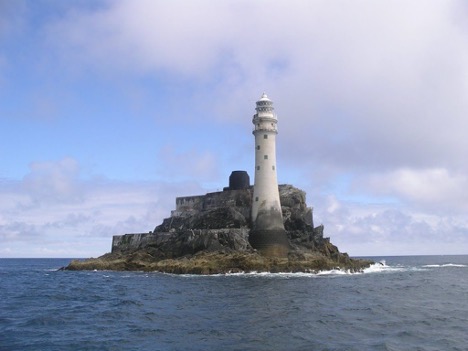
We know there here have been unintended or accidental attacks on lighthouses across the world during wartimes. However, during the Irish War of Independence, also called the Anglo-Irish War of 1919-1921, a dozen Irish lighthouses were deliberately attacked by combatants to secure the fiery munitions they possessed! These explosive devices, some 300,000 cotton-and gun-powder chargers and an equal number of detonators were held in stock mostly at isolated and remote light and signal stations for very good reasons. Fog signals at this time typically were a fundamental element in coastal navigation. The Irish Lights Service was seeing innovations in technology and more modern systems at its 74 light stations and 12 lightships, but at least 20 of the Irish Lights fog signals were still explosive in nature requiring chargers and detonators. Also, at this very time, a guerrilla war was fought between Irish revolutionaries called the Irish Revolutionary Army (the IRA), who wanted an independent Ireland from the British. Their opponent was the British Army which wanted the status quo, an Ireland under United Kingdom or British rule.
This undeclared war had been going on for years. In fact, the IRA launched what was called the Easter Rising in April 1916 against British rule and proclaimed an Irish Republic. That ten-day effort, while ending with the British maintaining control of Ireland, led to an outpouring and solidification of greater support for independence. Subsequent landslide voting in elections and, the formation of a break-away government ignited further conflict, resentment, and civil resistance, sometimes deadly. The IRA became a para-military organization capturing weaponry and munitions, and even overran several British Army barracks. Unfortunately, both sides began to use either terrorist reprisals, or notorious tactics against the civilian population.
British authorities declared martial law, but the killing continued. The center of Cork, a large Irish city, was burned out and more than 2,000 people was killed and thousands more were imprisoned during what was called “the troubles.”
The IRA determined that this supply of fog signal explosives was exactly the kind of equipment they needed. In the two years between 1919 and November 1921, the IRA carried out twenty-four raids on twelve lighthouses and fog signal stations along the south and west coasts which resulted in the theft of thousands of chargers and detonators.
In all the raids but one, keepers were allowed to continue operating the lights. At Fanad Head, the keeper was ordered to turn of the light while the IRA raiders attacked the Coast Guard Station nearby. The IRA raiders had to hold the keeper at gun point to prevent him from turning the light back on.
1921, October 24). I.R.A. Outrages in Donegal. Northern Whig.
While lighthouse stations suffered minor, incidental damage and keepers mostly were treated with respect by the IRA for the work they did, the IRA considered British Coast Guard stations to be military targets and extensions of British security forces. They were sometimes burned down during an attack. The frequency of raids increased and the appeals to the British military for assistance and protection from light stations and keepers also increased. Unfortunately, the British military was stretched too thin after fighting a World War to be of assistance.
Irish Lights took the dramatic step of using appeals through the national press by highlighting the danger to shipping if the fog signals were silenced. In a drastic step, a decision was made to close mainland fog signal stations because they had exhausted their supply.
There had been an assumption that the more remote station would be safe from the IRA, yet the most spectacular raid was a midnight operation on the Fastnet Lighthouse. That operation demonstrated that even Fastnet, perhaps the most isolated light station to access, could be raided.
By the end of 1920, raids on lighthouses were no longer yielding explosives. However, the raids continued, now centering on telescopes and other signaling apparatus. It was not until the end of June 1924 that all fog signals were restored to operational status.
(1921, June 30). Irish Lighthouses.Birmingham Daily Gazette.